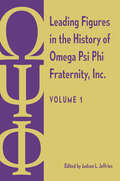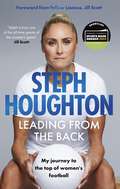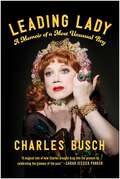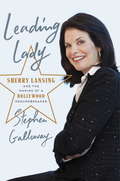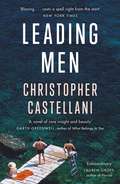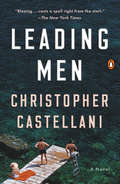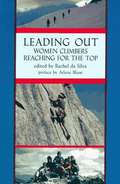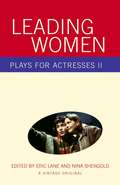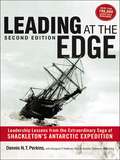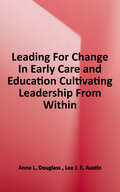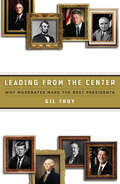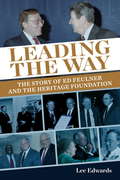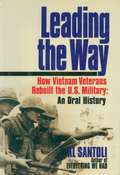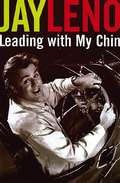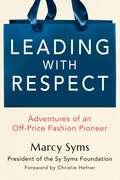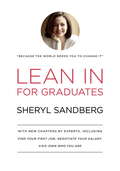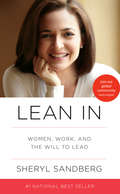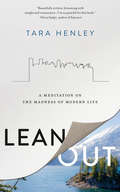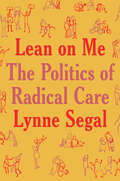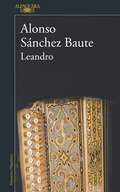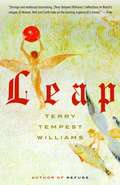- Table View
- List View
Leading Figures in the History of Omega Psi Phi Fraternity, Inc.: Volume 1
by Judson L. JeffriesHighlighting 21 members of this illustrious historically Black fraternity Omega Psi Phi Fraternity, Inc., was founded in 1911 at Howard University to cultivate and nurture a generation of leaders who would work toward racial uplift and influence American society. In an unprecedented two volumes, Judson Jeffries brings together original works on 21 of the fraternity’s accomplished and influential members. Written by a diverse group of scholars, these profiles highlight the national importance of these figures in their chosen fields of endeavor, as well as the enormous impact of this great fraternity. In volume 1, Jeffries presents a prologue and introduction that outline the story of the fraternity’s founding in the context of the racial, social, political, and educational history of the period. This volume spotlights scientists Ernest E. Just and Percy Lavon Julian; civil rights lawyers Fred Gray, Oliver Hill, Spottswood Robinson, and Oscar W. Adams Jr.; sports legends Robert Lee Elder and Clarence Gaines; and musicians Count Basie, Max Roach, and Roland Hayes.Including both widely recognized and little-known individuals and featuring people who were on the front lines of the struggle for racial equality and those whose work took place behind the scenes, these volumes show the contributions of Black leaders in the areas of science, civil rights, athletics, the arts, the military, politics, education, and more. Leading Figures in the History of Omega Psi Phi Fraternity, Inc. is a testament to the significance of Black Greek-letter organizations, whose members have made history through lives of struggle, accomplishment, triumph, and uplift. Contributors: Arthur Smith | Kevin C. McDonald | Marvin P. Dawkins | Theodore Walker, Jr. | Marvin Chiles | Waweise Schmidt | Bertis D. English | Judson L. Jeffries | Jomills Henry Braddock II | Matthew Buttermann | Christopher A. Brooks | Derryn Moten
Leading Figures in the History of Omega Psi Phi Fraternity, Inc.: Volume 2
by Judson L. JeffriesHighlighting 21 members of this illustrious historically Black fraternity Omega Psi Phi Fraternity, Inc., was founded in 1911 at Howard University to cultivate and nurture a generation of leaders who would work toward racial uplift and influence American society. In an unprecedented two volumes, Judson Jeffries brings together original works on 21 of the fraternity’s accomplished and influential members. Written by a diverse group of scholars, these profiles highlight the national importance of these figures in their chosen fields of endeavor as well as the enormous impact of this great fraternity. Volume 2 discusses Brigadier General Charles Young; artist and activist Charlotte "Lottie" Wilson, affectionately considered the fraternity's lone female member; modern civil rights activists T.R.M. Howard, Bayard Rustin, Lawrence Guyot, Jesse L. Jackson, and Emory O. Jackson; and scholars Lewis V. Baldwin, Asa Grant Hilliard III, and Benjamin E. Mays. Jeffries concludes by celebrating the recent rise in scholarship that draws attention to the fraternities and sororities that have connected other Black trailblazers such as these. Including both widely recognized and little-known individuals and featuring people who were on the front lines of the struggle for racial equality and those whose work took place behind the scenes, these volumes show the contributions of Black leaders in the areas of science, civil rights, athletics, the arts, the military, politics, education, and more. Leading Figures in the History of Omega Psi Phi Fraternity, Inc. is a testament to the significance of Black Greek-letter organizations, whose members have made history through lives of struggle, accomplishment, triumph, and uplift. Contributors: Judson L. Jeffries | Qiana M. Cutts | Francis V. Gourrier, Jr. | Dereck J. Rovaris | Kyle Brooks | Brian G. Shellum | Kimberly Mangun | Cynthia Hawkins | William J. Southerland | Raymond Sommerville | Jeaninne D. Wallace
Leading From The Back: My journey to the top of women's football
by Steph Houghton*One of Waterstones' Best Sport Books of the Year 2024*The inspiring memoir of one of football's greatest players - Steph Houghton - in which she recounts the highs and lows of making it to the top of her game as England Captain, star of the London Olympics, and Man City stalwart, via Sunderland, Leeds and Arsenal. With 121 caps for the Lionesses, Steph has been at the heart of the women's football revolution, inspiring girls and young women around the world but in her own understated way.Leading from the Back is Steph's incredibly honest account of what it takes to make it to the pinnacle of women's football when the odds are well and truly stacked against you.Inside, she shares her dreams of becoming professional as a young girl in Sunderland; how reaching that status has been a long and often difficult journey, with many personal struggles both on and off the pitch. In between, she recounts the amazing highs of playing for her country, making history at the Olympics, lifting cups for her team, and the awe-inspiring people she has encountered along the way. This is not only Steph's personal story, but also the story of women's football in England and internationally. Steph is credited as being one of the greatest influences in growing the women's game to the biggest it has ever been. A remarkable journey of unwavering determination that reveals the grit needed to stay true to yourself, and what it really takes to be a leader; this is the full and incredible story of a sports pioneer, 'Super Steph'.
Leading From The Back: My journey to the top of women's football
by Steph Houghton*One of Waterstones' Best Sport Books of the Year 2024*The inspiring memoir of one of football's greatest players - Steph Houghton - in which she recounts the highs and lows of making it to the top of her game as England Captain, star of the London Olympics, and Man City stalwart, via Sunderland, Leeds and Arsenal. With 121 caps for the Lionesses, Steph has been at the heart of the women's football revolution, inspiring girls and young women around the world but in her own understated way.Leading from the Back is Steph's incredibly honest account of what it takes to make it to the pinnacle of women's football when the odds are well and truly stacked against you.Inside, she shares her dreams of becoming professional as a young girl in Sunderland; how reaching that status has been a long and often difficult journey, with many personal struggles both on and off the pitch. In between, she recounts the amazing highs of playing for her country, making history at the Olympics, lifting cups for her team, and the awe-inspiring people she has encountered along the way. This is not only Steph's personal story, but also the story of women's football in England and internationally. Steph is credited as being one of the greatest influences in growing the women's game to the biggest it has ever been. A remarkable journey of unwavering determination that reveals the grit needed to stay true to yourself, and what it really takes to be a leader; this is the full and incredible story of a sports pioneer, 'Super Steph'.
Leading From The Back: My journey to the top of women's football
by Steph Houghton*One of Waterstones' Best Sport Books of the Year 2024*The inspiring memoir of one of football's greatest players - Steph Houghton - in which she recounts the highs and lows of making it to the top of her game as England Captain, star of the London Olympics, and Man City stalwart, via Sunderland, Leeds and Arsenal. With 121 caps for the Lionesses, Steph has been at the heart of the women's football revolution, inspiring girls and young women around the world but in her own understated way.Leading from the Back is Steph's incredibly honest account of what it takes to make it to the pinnacle of women's football when the odds are well and truly stacked against you.Inside, she shares her dreams of becoming professional as a young girl in Sunderland; how reaching that status has been a long and often difficult journey, with many personal struggles both on and off the pitch. In between, she recounts the amazing highs of playing for her country, making history at the Olympics, lifting cups for her team, and the awe-inspiring people she has encountered along the way. This is not only Steph's personal story, but also the story of women's football in England and internationally. Steph is credited as being one of the greatest influences in growing the women's game to the biggest it has ever been. A remarkable journey of unwavering determination that reveals the grit needed to stay true to yourself, and what it really takes to be a leader; this is the full and incredible story of a sports pioneer, 'Super Steph'.
Leading Lady: A Memoir of a Most Unusual Boy
by Charles BuschA poignant, deliciously anecdotal account of a talented artist's Oz-like journey in the worlds of Off-Broadway, Broadway, and Hollywood The Tony Award-nominated writer of The Tale of the Allergist&’s Wife and the long-running hit Off-Broadway play Vampire Lesbians of Sodom, and a Sundance Festival award winner, Charles Busch has created a unique place in the entertainment world as a playwright, LGBT icon, drag actor, director, and cabaret performer, with his extraordinary gift for both connecting with and channeling the leading ladies of show business. In wonderfully readable chapters, by turns comic and moving, Charles writes how ever since his mother's death when he was seven, he has sought out surrogate mothers in his life. In his teens, Charles moved to Park Avenue in Manhattan to live with his Auntie Mame-like Aunt Lil, who encouraged and nourished Charles&’ talents and dreams, and eventually he discovered his gifts for writing plays and performing as a male actress. Busch also shares his colorful and sometimes outlandish interactions with film and theatrical luminaries including the hilarious comedian Joan Rivers (who became a mother figure to Charles after Aunt Lil&’s death), Angela Lansbury (who attended her first Passover seder with Charles), Rosie O&’Donnell, Claudette Colbert, Valerie Harper, Kim Novak, and many others. Full of both humor and heart and featuring rare photos, Leading Lady is for readers of entertainment books as well as anyone who enjoys real-life stories of artists who break the mold, ditch the boundaries, and find their own unique way to sparkle.
Leading Lady: Sherry Lansing and the Making of a Hollywood Groundbreaker
by Stephen GallowayThe definitive biography of movie executive and philanthropist Sherry Lansing traces her groundbreaking journey to become the first female head of a major motion picture studio, shares behind-the-scenes tales from movie sets and Hollywood boardrooms, and explains what inspired her to walk away from it all to start the Sherry Lansing Foundation.When Sherry Lansing became the first woman ever to be named president of a major studio, the news ricocheted around the world. That was just the beginning of an extraordinary run that saw her head two studios, make hundreds of films, produce classic pictures such as Fatal Attraction and rule for twenty-five years as the most powerful woman Hollywood has ever known. Award-winning writer Stephen Galloway takes us behind the scenes of Lansing's epic journey—inside the battles; up close with the stars; and into the heart of a creative world populated by the likes of Meryl Streep, Steven Spielberg, Jane Fonda, Angelina Jolie and Tom Cruise. He shows us the velvet touch that masked the iron hand, and the roller-coaster drama behind such movies as Titanic, Forrest Gump, Braveheart and Saving Private Ryan. Above all, he takes us into the mind of Lansing, creating a revealing portrait of a dynamic, driven woman who overcame unimaginable odds, pushed boundaries and left Hollywood at the peak of her power to achieve the life she wanted.
Leading Men: 'A timeless and heart-breaking love story' Celeste Ng
by Christopher CastellaniSoon to be a film, written by Matthew Lopez (Olivier Award winner for The Inheritance), produced by Luca Guadagnino (Call Me By Your Name)'Movie stars in Italy, a longtime affair, and a missing Tennessee Williams play - what more could you want?' Celeste Ng, author of Little Fires Everywhere'A book to savour' Taylor Jenkins Reid, author of Daisy Jones & The Six'Extraordinary... I read Leading Men in one rapt afternoon' Lauren Groff, author of Fates and Furies'A novel of rare insight and beauty: Castellani is a writer of brilliant gifts' Garth Greenwell, author of What Belongs to You'Blazing... casts a spell right from the start' Dwight Garner, New York TimesPORTOFINO, ITALY. JULY 1953At a glittering party thrown by Truman Capote, literary sensation Tennessee Williams and his longtime lover Frank Merlo meet the enigmatic Anja Blomgren, an aspiring Swedish actress.Their encounter will alter the course of their lives forever. Spanning half a century and featuring a dazzling cast of characters - from Anna Magnani cooking pasta amatriciana in a sun-kissed kitchen in Rome, to Ludovico Visconti barking orders on his latest film set - Leading Men is a heart-breaking novel about life in the shadows of greatness, and a moving re-telling of one of the great literary love stories of the twentieth-century.'Seductive and steamy' Boston Globe'Touching' Washington Post'Dazzling' Entertainment Weekly'Spectacular' Publishers Weekly, Starred Review
Leading Men: A Novel
by Christopher Castellani"Spectacular... moving, beautifully written, and a bona fide page-turner." --Publishers Weekly, Starred Review"An extraordinary book." --Lauren Groff, author of FloridaIlluminating one of the great love stories of the twentieth century - Tennessee Williams and his longtime partner Frank Merlo - Leading Men is a glittering novel of desire and ambition, set against the glamorous literary circles of 1950s ItalyIn July of 1953, at a glittering party thrown by Truman Capote in Portofino, Italy, Tennessee Williams and his longtime lover Frank Merlo meet Anja Blomgren, a mysteriously taciturn young Swedish beauty and aspiring actress. Their encounter will go on to alter all of their lives.Ten years later, Frank revisits the tempestuous events of that fateful summer from his deathbed in Manhattan, where he waits anxiously for Tennessee to visit him one final time. Anja, now legendary film icon Anja Bloom, lives as a recluse in the present-day U.S., until a young man connected to the events of 1953 lures her reluctantly back into the spotlight after he discovers she possesses the only surviving copy of Williams's final play. What keeps two people together and what breaks them apart? Can we save someone else if we can't save ourselves? Like The Master and The Hours, Leading Men seamlessly weaves fact and fiction to navigate the tensions between public figures and their private lives. In an ultimately heartbreaking story about the burdens of fame and the complex negotiations of life in the shadows of greatness, Castellani creates an unforgettable leading lady in Anja Bloom and reveals the hidden machinery of one of the great literary love stories of the twentieth-century.
Leading Out: Women Climbers Reaching for the Top
by Rachel Da SilvaLeading Out is a valuable collection of inspiring essays by the most prominent and impassioned women climbers in recent history. A real tribute to the efforts and dedication of the women who have struggled to pursue their passion for climbing.
Leading Representatives: The Agency of Leaders in the Politics of the U.S. House (Interpreting American Politics)
by Randall StrahanMany studies of Congress hold that congressional leaders are "agents" of their followers, ascertaining what legislators agree on and acting to advance those issues rather than stepping to the forefront to shape national policy or the institution they lead. Randall Strahan has long argued that this approach to understanding leadership is incomplete. Here he demonstrates why and explores the independent contributions leaders make in congressional politics.Leading Representatives is a study that draws on both historical and contemporary cases to show how leaders in the U.S. House have advanced changes inside Congress and in national policy. Exploring the tactics, tenure, and efficacy of the leadership of three of the most colorful and prominent Speakers of the House—Henry Clay, Thomas Reed, and Newt Gingrich—Strahan finds that these men, though separated in time and of differing thought and actions, were all leaders willing to take political risks to advance goals they cared about deeply. As a result, each acted independently of his followers to alter the political landscape. Strahan makes use of a wide range of resources, including the former representatives' papers and correspondence and interviews with Gingrich and his staffers, to demonstrate how these important leaders influenced policy and politics and where they ran aground.In expounding lessons Strahan has gleaned over two decades of studying U.S. legislative politics, Leading Representatives offers a new theoretical framework—the conditional agency perspective—that effectively links contextual perspectives as applied to congressional leadership with those emphasizing characteristics of individual leaders. This engagingly written book will be of interest to political scholars of all stripes as well as readers inclined to learn more about the history and inner workings of the House.
Leading Women: Plays For Actresses II
by Eric Lane Nina ShengoldGather any group of actresses, from students to stars, and someone will inevitably ask, "Where are all the great roles for women?" The roles are right here, in this magnificently diverse collection of plays-full-lenghts, one-acts, and monologues--with mainly female casts, which represent the answer to any actress's prayer. The editors of the groundbreaking anthology Plays for Actresses have once again gathered an abundance of strong female roles in a selection of works by award-winning authors and cutting-edge newer voices, from Wendy Wasserstein and Christopher Durang to Claudia Shear, Eve Ensler, and Margaret Edson. The characters who populate these seven full-length plays, four ten-minute plays, and eleven monologues include a vivid cross-section of female experience: girl gang members, Southern debutantes, pilots, teachers, traffic reporters, and rebel teenagers. From a hilarious take on Medea to a taboo-breaking excerpt from The Vagina Monologues to a moving scene from the Pulitzer Prize-winning Wit, the plays in Leading Women are complex, funny, tragic, and always original--and a boon for talented actresses everywhere.
Leading at The Edge: Leadership Lessons from the Extraordinary Saga of Shackleton's Antarctic Expedition
by Dennis Perkins Margaret Holtman Jillian MurphyDrawing on the amazing story of Shackleton and his polar exploration team&’s survival against all odds, author Dennis N. T. Perkins demonstrates the importance of a strong leader in times of adversity, uncertainty, and change.Part adventure tale and part leadership guide, Leading at the Edge uncovers what the legendary Antarctic adventure of Sir Ernest Shackleton, his ship Endurance, and his team of twenty-seven polar explorers can teach us about bringing order to chaos through true leadership.Among other skills, you&’ll learn how to:instill optimism while staying grounded in reality,step up to risks worth taking,consistently reinforce your team message,set a personal example,find things to celebrate,laugh small things off,and--even in the face of extreme temperatures, hazardous ice, scarce food, and complete isolation--never give up.This second edition of Leading at the Edge features additional lessons, new case studies of the strategies in action, tools to uncover and resolve conflicts, and expanded resources.An updated epilogue compares the leadership styles of the famous polar explorers Shackleton, Amundsen, and Scott, which transcend the one-hundred-plus years since their historic race to the South Pole to help today&’s leaders learn valuable lessons about the meaning of true success.
Leading for Change in Early Care and Education: Cultivating Leadership from Within (Early Childhood Education Ser.)
by Anne L. DouglassFeaturing both research findings and practical recommendations, this book presents an innovative framework for nurturing leadership in the care and education of young children. Early educators are often seen as the objects of change, rather than the architects and co-creators of change. Douglass calls for a paradigm shift in thinking that challenges many long-held stereotypes about the early care and education workforce's capacity to lead change. Case studies show how educators use their expertise every day to make a difference in the lives of children and families. These accounts demonstrate concrete strategies for expanding current thinking about who can be leaders for change and for developing more inclusive pathways for leadership. This book has the potential to revolutionize the field with a new model for developing and nurturing innovative, entrepreneurial, and skilled early educator leaders capable of driving transformative change-from classrooms and home-based programs to communities and beyond. Includes a cross-disciplinary examination of leadership, improvement, and innovation, a framework for building ecosystems that supports professional growth and teacher retention, case studies that reveal immense untapped potential from within the early care and education workforce, and a critical look at the current state of leadership and quality improvement in early childhood education.
Leading from the Center: Why Moderates Make the Best Presidents
by Gil TroyGeorge Washington, Abraham Lincoln, Theodore Roosevelt, Franklin Delano Roosevelt, John F. Kennedy-most would agree their presidencies were among the most successful in American history. But what made these very different men such effective leaders? According to presidential historian Gil Troy, these presidents succeeded not because of their bold political visions, but because of their moderation. Although many of the presidential hopefuls for 2008 will claim to be moderates, the word cannot conceal a political climate defined by extreme rhetoric and virulent partisanship. In Leading From the Center, Gil Troy argues that this is a distinctly un-American state of affairs. The great presidents of American history have always sought a golden mean-from Washington, who brilliantly mediated between the competing visions of Thomas Jefferson and Alexander Hamilton, to Lincoln, who rescued the Union with his principled pragmatism, to the two Roosevelts, who united millions of Americans with their powerful, affirmative, nationalist visions. As America lines up to select a president for the future, Gil Troy astutely reminds us of the finest traditions of presidential leadership from our nation's past.
Leading the Way
by Lee EdwardsThe remarkable history of The Heritage Foundation, its influential founder, and the conservative movement in America.Leading the Way tells the story of how Ed Feulner has transformed policymaking in Washington and has led The Heritage Foundation into becoming the most influential conservative think tank in the nation. Under Ed Feulner and for 36 years, Heritage has shaped politics with conservative solutions for such critical issues as entitlements, national security, missile defense, health care, welfare reform, immigration, free trade, energy, and the role of the family and religion in society. Today, with over hundreds of thousands of members and an annual budget of more than $80 million, Heritage is a permanent Washington institution and the leading exponent of conservative ideas in America and around the world. The man who made it happen is Ed Feulner, intellectual entrepreneur, hands-on manager, legendary fundraiser, presidential adviser, bestselling author, and world traveler--a man who never stops and was described by The Economist as "one of the most influential conservatives in America."
Leading the Way: How Vietnam Veterans Rebuilt the U.S. Military: An Oral History
by Al Santoli"Required reading for anyone seeking a valid perspective on America's military over the past three decades." Kirkus ReviewsFifty-six combat veterans, from senior sergeants to generals, reveal in their own words how a small group of courageous, determined men and women brought the U.S. military from the wounds of Vietnam back to high standards of excellence and made possible the victory of Desert Storm . . .From the Paperback edition.
Leading with My Chin
by Jay Leno Bill ZehmeLeading With My Chin is an interesting book to read. The comic stories explain Jay Leno's childhood, adult life and career.
Leading with Respect: Adventures of an Off-Price Fashion Pioneer
by Marcy SymsInfused with inspiring lessons and inside stories, this is a compelling look at leadership from a retail fashion pioneer who guided her family&’s company through decades of success, all built on a foundation of respect. For 35 years, Marcy Syms appeared in TV and radio commercials for her family&’s company, voicing its famous slogan, &“An educated consumer is our best customer.&” Syms was the first truly off-price retailer, offering name brands at cut-rate prices. At its peak, the chain had dozens of stores in 13 states. For Syms, the key to success was respect—for the consumers, for the employees, and for the designer brands they sold. Working closely with her father, Sy Syms, the business&’s founder, Marcy helped transform Syms from a family concern to a retailing powerhouse. When Syms went public, Marcy became the youngest female president of an NYSE-listed company. From the triumphs and challenges of female entrepreneurship to the excitement of store openings, Leading with Respect recounts the extraordinary origin story of off-price retailing and provides a perceptive look at a business that foreshadowed many of today&’s market trends. Full of personal recollections and relatable insights, Leading with Respect shares one businesswoman&’s journey from the backroom to the boardroom.
Lean In: For Graduates
by Sheryl SandbergExpanded and updated exclusively for graduates just entering the workforce, this extraordinary edition of Lean In includes a letter to graduates from Sheryl Sandberg and six additional chapters from experts offering advice on finding and getting the most out of a first job; résumé writing; best interviewing practices; negotiating your salary; listening to your inner voice; owning who you are; and leaning in for millennial men. In 2013, Sheryl Sandberg's Lean In became a massive cultural phenomenon and its title became an instant catchphrase for empowering women. The book soared to the top of best-seller lists both nationally and internationally, igniting global conversations about women and ambition. Sandberg packed theaters, dominated op-ed pages, appeared on every major television show and on the cover of Time magazine, and sparked ferocious debate about women and leadership. Now, this enhanced edition provides the entire text of the original book updated with more recent statistics and features a passionate letter from Sandberg encouraging graduates to find and commit to work they love. A combination of inspiration and practical advice, this new edition will speak directly to graduates and, like the original, will change lives. New Material for the Graduate Edition: · A Letter to Graduates from Sheryl Sandberg · Find Your First Job, by Mindy Levy (Levy has more than twenty years of experience in all phases of organizational management and holds degrees from Wharton and Penn) · Negotiate Your Salary, by Kim Keating (Keating is the founder and managing director of Keating Advisors) · Man Up: Millennial Men and Equality, by Kunal Modi (Modi is a consultant at McKinsey & Company and a recent graduate of Harvard Kennedy School and Harvard Business School) · Leaning In Together, by Rachel Thomas (Thomas is the president of Lean In) · Own Who You Are, by Mellody Hobson (Hobson is the president of Ariel Investments) · Listen to Your Inner Voice, by Rachel Simmons (Simmons is cofounder of the Girls Leadership Institute) · 12 Lean In stories (500-word essays), by readers around the world who have been inspired by Sandberg
Lean In: Women, Work, and the Will to Lead
by Sheryl SandbergThirty years after women became 50 percent of the college graduates in the United States, men still hold the vast majority of leadership positions in government and industry. This means that women's voices are still not heard equally in the decisions that most affect our lives. In Lean In, Sheryl Sandberg examines why women's progress in achieving leadership roles has stalled, explains the root causes, and offers compelling, commonsense solutions that can empower women to achieve their full potential. Sandberg is the chief operating officer of Facebook and is ranked on Fortune's list of the 50 Most Powerful Women in Business and as one of Time's 100 Most Influential People in the World. In 2010, she gave an electrifying TEDTalk in which she described how women unintentionally hold themselves back in their careers. Her talk, which became a phenomenon and has been viewed more than two million times, encouraged women to "sit at the table," seek challenges, take risks, and pursue their goals with gusto.In Lean In, Sandberg digs deeper into these issues, combining personal anecdotes, hard data, and compelling research to cut through the layers of ambiguity and bias surrounding the lives and choices of working women. She recounts her own decisions, mistakes, and daily struggles to make the right choices for herself, her career, and her family. She provides practical advice on negotiation techniques, mentorship, and building a satisfying career, urging women to set boundaries and to abandon the myth of "having it all." She describes specific steps women can take to combine professional achievement with personal fulfillment and demonstrates how men can benefit by supporting women in the workplace and at home. Written with both humor and wisdom, Sandberg's book is an inspiring call to action and a blueprint for individual growth. Lean In is destined to change the conversation from what women can't do to what they can.
Lean Out: A Meditation on the Madness of Modern Life
by Tara Henley"Beautifully written, brimming with insight and reassurance--I'm so grateful for this book." -Olivia Sudjic, author of ExposureA deeply personal and informed reflection on the modern world--and why so many feel disillusioned by it.In 2016, journalist Tara Henley was at the top of her game working in Canadian media. She had traveled the world, from Soweto to Bangkok and Borneo to Brooklyn, interviewing authors and community leaders, politicians and Hollywood celebrities. But when she started getting chest pains at her desk in the newsroom, none of that seemed to matter.The health crisis--not cardiac, it turned out, but anxiety--forced her to step off the media treadmill and examine her life and the stressful twenty-first century world around her. Henley was not alone; North America was facing an epidemic of lifestyle-related health problems. And yet, the culture was continually celebrating the elite few who thrived in the always-on work world, those who perpetually leaned in. Henley realized that if we wanted innovative solutions to the wave of burnout and stress-related illness, it was time to talk to those who had leaned out. Part memoir, part travelogue, and part investigation, Lean Out tracks Henley's journey from the heart of the connected city to the fringe communities that surround it. From early retirement enthusiasts in urban British Columbia to moneyless men in rural Ireland, Henley uncovers a parallel track in which everyday citizens are quietly dropping out of the mainstream and reclaiming their lives from overwork. Underlying these disparate movements is a rejection of consumerism, a growing appetite for social contribution, and a quest for meaningful connection in this era of extreme isolation and loneliness. As she connects the dots between anxiety and overwork, Henley confronts the biggest issues of our time.
Lean on Me: A Politics of Radical Care
by Lynne SegalHave you ever relied on the kindness of strangers? What brings people together to find hope and solidarity? What do we owe each other as citizens and comrades?Questions of care, intimacy, education, meaningful work, and social engagement lie at the core of our ability to understand the world and its possibilities for human flourishing. In Lean On Me feminist thinker Lynne Segal goes in search of hope in her own life and in the world around her. She finds it entwined in our intimate commitments to each other and our shared collective endeavours.Segal calls this shared dependence 'radical care'. In recounting from her own life the moments of motherhood, and of being on the front line of second-wave feminism, she draws upon lessons from more than half a century of engagement in left feminist politics, with its underlying commitment to building a more egalitarian and nurturing world. The personal and the political combine in this rallying cry to transform radically how we approach education, motherhood, and our everyday vulnerabilities of disability, ageing, and enhanced needs.Only by confronting head-on these different forms of interdependence and care can we change the way we think about the environment and learn to struggle — together —against impending climate catastrophe.
Leandro
by Alonso Sánchez BauteEn esta biografía novelada, Alonso Sánchez Baute reconstruye la vida de uno de los personajes más legendarios y entrañables de la escena del vallenato en Colombia: el maestro Leandro Díaz. A partir de hechos reales y de un profundo conocimiento de la región del Valle de Upar, el autor ha conseguido el emotivo retrato de un hombre que nace ciego en un pueblo alejado donde la incapacidad es considerada un castigo; y que a pesar del abandono en el que crece, llega a componer algunos de los más hermosos y conocidos vallenatos de Colombia. Los testimonios de sus familiares y amigos, así como las ricas descripciones del paisaje, la flora y la fauna de la región, llevarán al lector a un viaje por entre los pueblos y amores que inspiraron a Leandro. «Por eso quiero que cuentes mi historia y que cuentes, de paso, esa otra pena que me atormenta, tan arraigada y dolorosa como la ceguera».
Leap
by Terry Tempest WilliamsSearing in its spiritual, intellectual, and emotional courage, Williams' divine journey enables her to realize the full extent of her faith and through her exquisite imagination opens our eyes to the splendor of the world.
